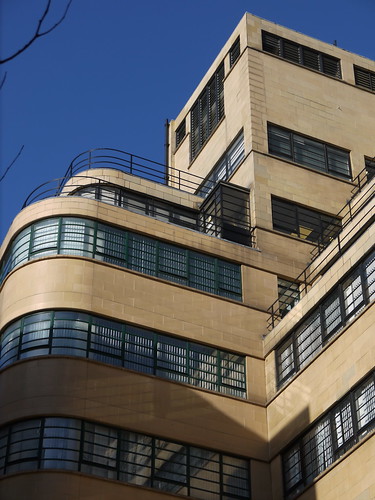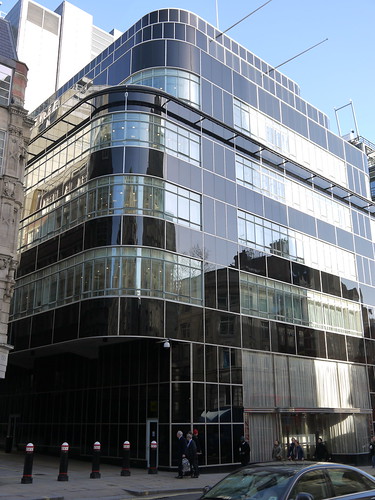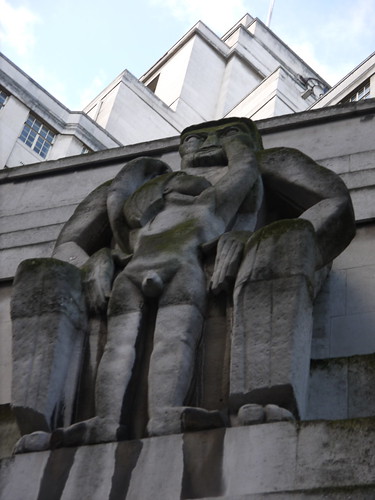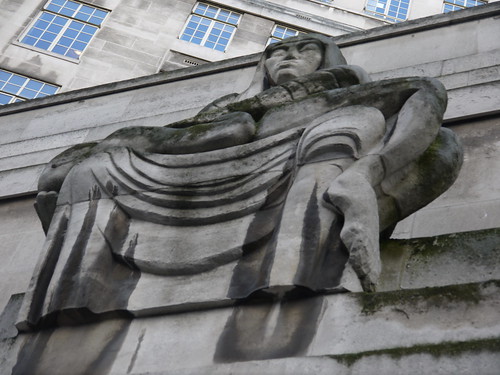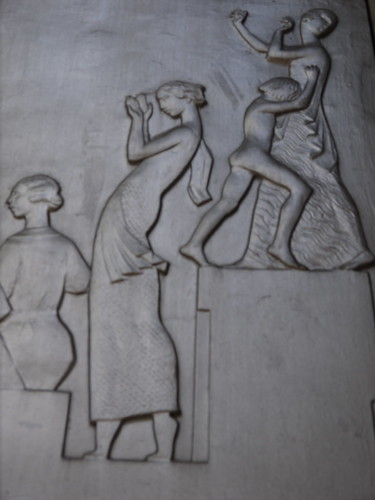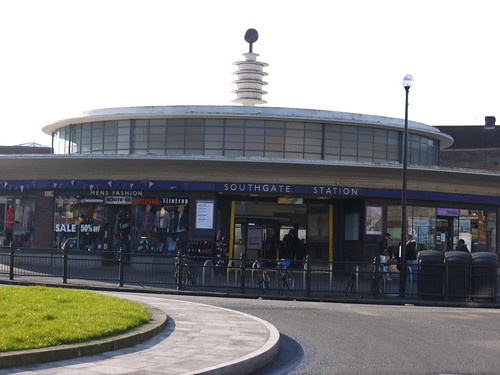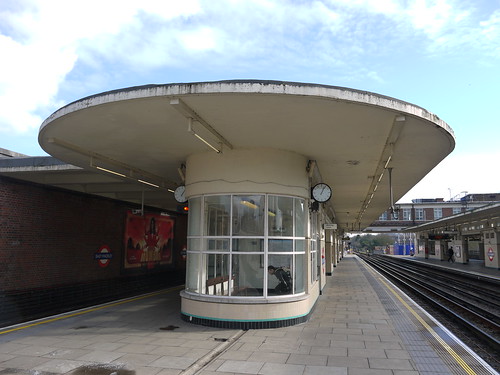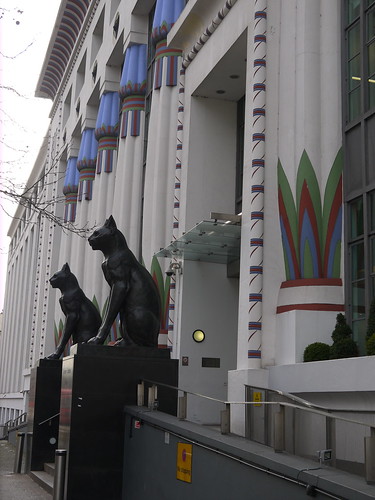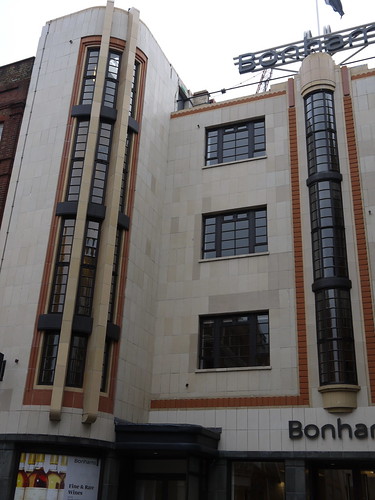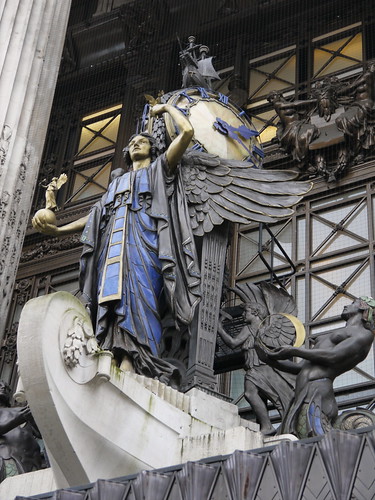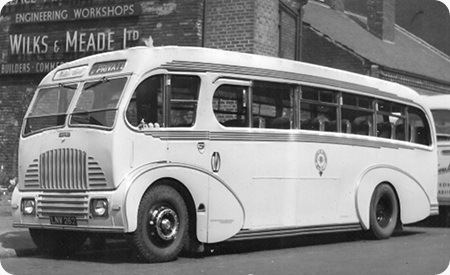Its hard to believe that a year has passed since 2012's Jewish Book Week, but it has and the first weekend has already hit some tremendous heights that will be challenging to sustain throughout this, London's largest literary festival.
I went along on Saturday night to one of the first events, "Dilemmas of Difference - German Jews, Jewish Germans". The session featured two writers - Rafael Seligmann whose family returned to Germany from Israel in 1957 when he was 10 and Olga Grjasnowa born in Baku, Azerbaijan in the former Soviet Union and one of around 150,000 Soviet Jews who arrived in Germany during the 1990's.
Ably chaired by Tina Mendelsohn, also German, they discussed a number of issues including relations between the longer established German Jewish community - a remnant of about 25,000 following the Second World War - and the more recently arrived Russians, many of whom are not religious or are in mixed marriages; the anti-semitism of the German intelligentsia, often, although not always, masquerading behind anti-Zionism before moving on to Jewish cultural regeneration in Berlin.
Seligmann and Grjasnowa represent two different Jewish experiences in Germany but they concurred on a number of issues including the astonishing recent debate in Germany on circumcision. Seligmann had been ambushed on German radio when invited to speak about Jewish culture and was bombarded with questions on one subject only - circumcision. Explaining that this was not just a Jewish matter, but also one relating to Muslims and many others regardless of religion, he also reminded his host that Christ had been a circumcised Jew. Apparently the host became apoplectic saying "don't say bad things about Jesus".
Grjasnowa was a little more positive, saying she felt at home in Berlin but was suspicious of nationality and governments. She felt that although there is anti-semitism in Germany, it is more subtle than in Moscow and Warsaw where she had experienced overt prejudice. She also identified an interesting kind of philo-semitism where certain non Jews express their admiration for Jews or for Israel before going on to trot out all the old tropes about wealth, business and all that goes with it.
Someone in the audience asked Seligmann why he had remained in Germany. His reply was interesting. Its not all bad, he told us, but more than that he is a prisoner - a prisoner of the German language and culture - which for me resonated with Amos Elon's book "The Pity of it All" which charted the journey of German Jewry from success and assimilation to annihilation at the hands of those whose culture they had adopted and most admired. Seligmann went on to remark that although the Jews were and still are traumatised by the Holocaust, so are the Germans, acknowledging the difficulty of being the inheritors of such a legacy.
Grjasnowa, who has recently published her first novel, represents the changing face of German Jewry. Born to a Jewish mother and Christian father, she is familiar and comfortable with Azeri culture, knows about Muslim festivals from her childhood and told the audience that several of her Jewish relatives had managed to marry anti-semites. There has to be some great material here for several books. I will be looking out for them.
The panel also discussed the official attitude to Jews in Germany which is welcoming and conciliatory. However, they agreed that to a large extent this is used as a cover for not addressing wider problems of racism in German society. Mendelsohn told the audience that it is only a few years ago that the word "negro" stopped being used in children's books with an attendant outcry from parents.
The importance of one's "home language" came up in an interesting session today. Mario Levi (pictured below) is a Turkish Jew who has written five novels over a number of years - just one of which "Istanbul Was a Fairy Tale" has been translated into English. He explained that although he had grown up to be fluent in Ladino and French as well as competent in English, he chooses to write in Turkish. The reason for this was that his "feelings" are experienced in Turkish - happiness, first love, anger and even the use of bad language. He was anxious to point out that although his novel charts the history of a Turkish Jewish family over several decades in the 20th century, he is not a historian. But, interestingly, he advised the audience that if they wanted to know real history, they should read novels about cities and countries as it is here we would find the "feelings" of the times written about, rather than the facts which are often re-written.
Levi was an extremely personable and entertaining personality and charmed the audience with his plans for a new novel centring on Sephardi cookery, its stories and traditions.He told us that his mother has now retired from cooking for the family seder at Pesach due to age, but that he has happily taken over. It was clear that this will be a novel full of the feelings he referred to earlier, indeed, these feelings tripped over into listing the menu for his forthcoming seder -albeit at the request of the audience. In addition to the charming Mr Levi, I was thrilled that the session was chaired by non other than Maureen Freely, translator of Orhan Pamuk's books, lover of Istanbul and excellent writer in her own right. What a treat.
Earlier in the day I attended two very different sessions. Howard Jacobson, despite being troubled with a cold, was his usual entertaining, challenging, provoking and downright funny self. He read a little from his latest book "Zoo Time", spoke about finally getting the recognition he has long deserved in securing the Booker Prize for "The Finkler Question" and in response to a question from the audience explained that his books would never become films because they rely on words rather than on action. Well thank goodness for that.
He joked about the theme of "Zoo Time" in which the main character finds himself attracted to his now mother-in-law, saying that of the three mothers-in-law he had had, he preferred at least two of them to the wives. He also gave us some serious stuff. He was critical of those who would only offer young people books they can "identify with", denying them access to some of the greatest writers because those young people don't happen to be white or middle-class. He was exasperated with people who say they can't identify with characters in his and other novels, or that the characters are not likeable - arguing that they are missing the point of fiction, which is to broaden horizons, challenge the reader, make them think and to represent the breadth of human experience. It was a bit of a rant. But it needs saying and more often. Nice one Howard.
My other session of the day was "Out of Palestine" the title of Hadara Lazar's book about the lasting influence of the British Mandate. This is not a new book, but newly translated into English and was the result of over 100 interviews that Lazar conducted in the 1980's with Jews, Arabs and Britons who had lived through the end of Mandate period in the 1940's and who recounted their personal experiences to her. She described the British as "carriers of dreams" for both Arab nationalism and a Jewish homeland - big projects which were (and still are) seemingly irreconcilable.
She feels that the British tried early on in the Mandate to resolve these conflicts, partly though developing the country's infrastructure and bringing benefits to both communities, but having realised the difficulty, carried out an orderly withdrawal. Unfortunately they omitted to hand over control to either side, resulting in chaos and war. She reminded us that similar things had happened when the British withdrew from India and Cyprus, but at least there had been some handover there and the problems of those countries, although continuing, are in a sense, resolved, whereas those of Israel are not. She somehow gained astonishing access to leading Arab families, mainstream Jews from the Palmach, at least one member of the Lehi and a number of Britons who had held positions of responsibility at the time. Almost all of these people are now dead and her work is an important record of the time. Like Mario Levi, Hadara Lazar is also a novelist and denies being a historian. I bought the book (and a lot of others!) and am expecting to find evidence of the "feelings" that Levi mentioned in his session.
An absolutely cracking start to one of the best weeks of the year. There's lots more to come. I can hardly wait.
I went along on Saturday night to one of the first events, "Dilemmas of Difference - German Jews, Jewish Germans". The session featured two writers - Rafael Seligmann whose family returned to Germany from Israel in 1957 when he was 10 and Olga Grjasnowa born in Baku, Azerbaijan in the former Soviet Union and one of around 150,000 Soviet Jews who arrived in Germany during the 1990's.
Ably chaired by Tina Mendelsohn, also German, they discussed a number of issues including relations between the longer established German Jewish community - a remnant of about 25,000 following the Second World War - and the more recently arrived Russians, many of whom are not religious or are in mixed marriages; the anti-semitism of the German intelligentsia, often, although not always, masquerading behind anti-Zionism before moving on to Jewish cultural regeneration in Berlin.
Seligmann and Grjasnowa represent two different Jewish experiences in Germany but they concurred on a number of issues including the astonishing recent debate in Germany on circumcision. Seligmann had been ambushed on German radio when invited to speak about Jewish culture and was bombarded with questions on one subject only - circumcision. Explaining that this was not just a Jewish matter, but also one relating to Muslims and many others regardless of religion, he also reminded his host that Christ had been a circumcised Jew. Apparently the host became apoplectic saying "don't say bad things about Jesus".
Grjasnowa was a little more positive, saying she felt at home in Berlin but was suspicious of nationality and governments. She felt that although there is anti-semitism in Germany, it is more subtle than in Moscow and Warsaw where she had experienced overt prejudice. She also identified an interesting kind of philo-semitism where certain non Jews express their admiration for Jews or for Israel before going on to trot out all the old tropes about wealth, business and all that goes with it.
Someone in the audience asked Seligmann why he had remained in Germany. His reply was interesting. Its not all bad, he told us, but more than that he is a prisoner - a prisoner of the German language and culture - which for me resonated with Amos Elon's book "The Pity of it All" which charted the journey of German Jewry from success and assimilation to annihilation at the hands of those whose culture they had adopted and most admired. Seligmann went on to remark that although the Jews were and still are traumatised by the Holocaust, so are the Germans, acknowledging the difficulty of being the inheritors of such a legacy.
Grjasnowa, who has recently published her first novel, represents the changing face of German Jewry. Born to a Jewish mother and Christian father, she is familiar and comfortable with Azeri culture, knows about Muslim festivals from her childhood and told the audience that several of her Jewish relatives had managed to marry anti-semites. There has to be some great material here for several books. I will be looking out for them.
The panel also discussed the official attitude to Jews in Germany which is welcoming and conciliatory. However, they agreed that to a large extent this is used as a cover for not addressing wider problems of racism in German society. Mendelsohn told the audience that it is only a few years ago that the word "negro" stopped being used in children's books with an attendant outcry from parents.
The importance of one's "home language" came up in an interesting session today. Mario Levi (pictured below) is a Turkish Jew who has written five novels over a number of years - just one of which "Istanbul Was a Fairy Tale" has been translated into English. He explained that although he had grown up to be fluent in Ladino and French as well as competent in English, he chooses to write in Turkish. The reason for this was that his "feelings" are experienced in Turkish - happiness, first love, anger and even the use of bad language. He was anxious to point out that although his novel charts the history of a Turkish Jewish family over several decades in the 20th century, he is not a historian. But, interestingly, he advised the audience that if they wanted to know real history, they should read novels about cities and countries as it is here we would find the "feelings" of the times written about, rather than the facts which are often re-written.
Levi was an extremely personable and entertaining personality and charmed the audience with his plans for a new novel centring on Sephardi cookery, its stories and traditions.He told us that his mother has now retired from cooking for the family seder at Pesach due to age, but that he has happily taken over. It was clear that this will be a novel full of the feelings he referred to earlier, indeed, these feelings tripped over into listing the menu for his forthcoming seder -albeit at the request of the audience. In addition to the charming Mr Levi, I was thrilled that the session was chaired by non other than Maureen Freely, translator of Orhan Pamuk's books, lover of Istanbul and excellent writer in her own right. What a treat.
Earlier in the day I attended two very different sessions. Howard Jacobson, despite being troubled with a cold, was his usual entertaining, challenging, provoking and downright funny self. He read a little from his latest book "Zoo Time", spoke about finally getting the recognition he has long deserved in securing the Booker Prize for "The Finkler Question" and in response to a question from the audience explained that his books would never become films because they rely on words rather than on action. Well thank goodness for that.
He joked about the theme of "Zoo Time" in which the main character finds himself attracted to his now mother-in-law, saying that of the three mothers-in-law he had had, he preferred at least two of them to the wives. He also gave us some serious stuff. He was critical of those who would only offer young people books they can "identify with", denying them access to some of the greatest writers because those young people don't happen to be white or middle-class. He was exasperated with people who say they can't identify with characters in his and other novels, or that the characters are not likeable - arguing that they are missing the point of fiction, which is to broaden horizons, challenge the reader, make them think and to represent the breadth of human experience. It was a bit of a rant. But it needs saying and more often. Nice one Howard.
My other session of the day was "Out of Palestine" the title of Hadara Lazar's book about the lasting influence of the British Mandate. This is not a new book, but newly translated into English and was the result of over 100 interviews that Lazar conducted in the 1980's with Jews, Arabs and Britons who had lived through the end of Mandate period in the 1940's and who recounted their personal experiences to her. She described the British as "carriers of dreams" for both Arab nationalism and a Jewish homeland - big projects which were (and still are) seemingly irreconcilable.
She feels that the British tried early on in the Mandate to resolve these conflicts, partly though developing the country's infrastructure and bringing benefits to both communities, but having realised the difficulty, carried out an orderly withdrawal. Unfortunately they omitted to hand over control to either side, resulting in chaos and war. She reminded us that similar things had happened when the British withdrew from India and Cyprus, but at least there had been some handover there and the problems of those countries, although continuing, are in a sense, resolved, whereas those of Israel are not. She somehow gained astonishing access to leading Arab families, mainstream Jews from the Palmach, at least one member of the Lehi and a number of Britons who had held positions of responsibility at the time. Almost all of these people are now dead and her work is an important record of the time. Like Mario Levi, Hadara Lazar is also a novelist and denies being a historian. I bought the book (and a lot of others!) and am expecting to find evidence of the "feelings" that Levi mentioned in his session.
An absolutely cracking start to one of the best weeks of the year. There's lots more to come. I can hardly wait.

